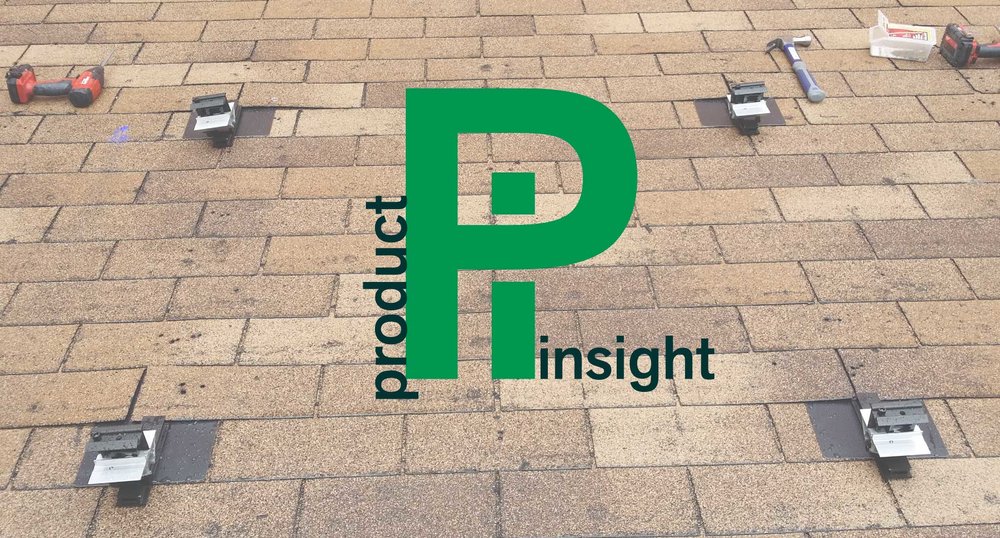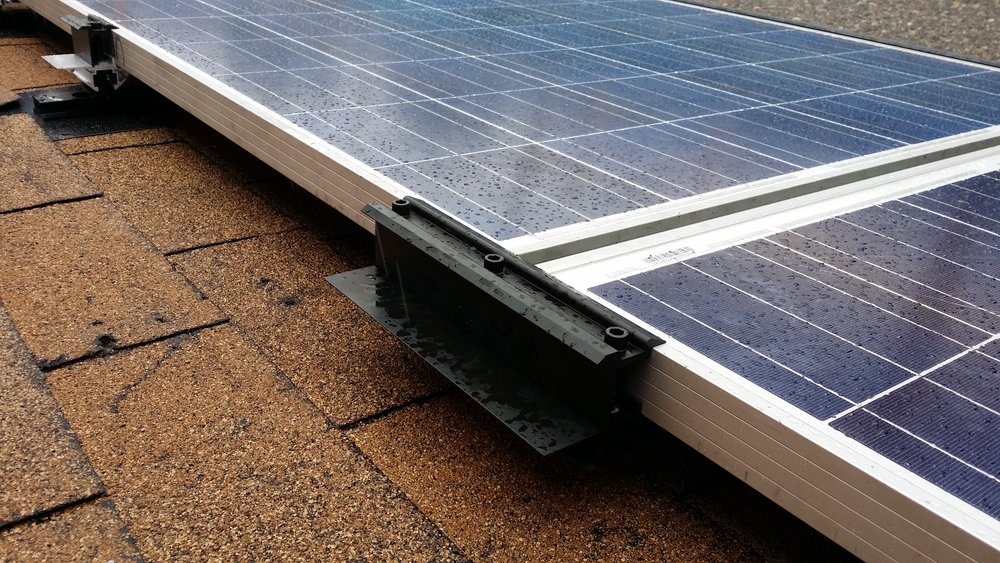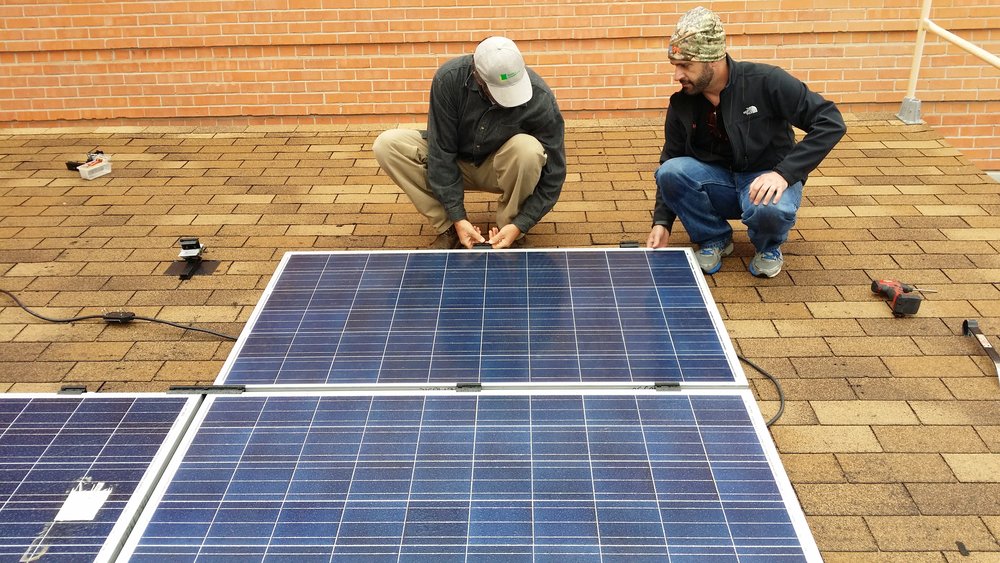
On a cold and wet Albuquerque day (alternately raining, drizzling, spitting, and dry), Scott Snyder and I spent an afternoon checking out Unirac’s rail-less mounting solution, the
The Obvious
SFM is easy to store, ship, and get on a roof. Don Dulac (our Unirac guide) bragged that he could fit an entire rack for a decently-sized residential system in the back of a Honda Civic. This could save some shipping costs just by not having to move rail.
The Good
The SFM makes installation on comp shingle roofs easy. As unpracticed as Scott and I were, it was still straightforward. There is good built-in adjustability for up/down variation (wavy roofs) and north/south adjustability as well. And because the parts no longer need rail, space required in the warehouse or truck has been reduced. This also means the racking system is also not as unwieldy as before. With a little practice, I can see this being a very fast rack to install. The aesthetics are good too; the rack has a sleek look that has always been a hallmark of Unirac’s
The Bad
Heat dissipation is a potential issue, particularly in the southwest where temperatures are much higher. The rack sits just a few inches off the roof, which maintains the sleek look, but could potentially cause heat buildup underneath the modules. The QuickMount option (mentioned later) helps with this, and installers have the option to adjust inter-module spacing to provide more heat dissipation as well.
 The system has integrated east/west bonding, but because of the innovative clamp-and-capture installation process, north/south bonding jumpers are required. While they’re made to be easy to install, they’re still awkward. I didn’t love the flat-flashing seal, but fortunately, Unirac makes a QuickMount-licensed version.
The system has integrated east/west bonding, but because of the innovative clamp-and-capture installation process, north/south bonding jumpers are required. While they’re made to be easy to install, they’re still awkward. I didn’t love the flat-flashing seal, but fortunately, Unirac makes a QuickMount-licensed version.
Module spacing isn’t mechanically regulated—as it is with mid-clamps on a railed system—so spacing can be uneven. In cases in which no spacing is left between modules, installers could experience issues with thermal expansion although Unirac does provide guidance for both thermal expansion and module gaps.
The Rest
The front row trim is important because it sets up the rest of the array; if you install it well, the rest should fall
Wire management is always difficult for any rail-less system. SFM uses Heyco wire clips (for both leads and trunk cable), which are inelegant, but effective. The floating splice actually floats—it’s not attached to the roof. This floating splice is used to join modules together where there’s no roof truss to attach to, and lends the modules enough rigidity for most situations.
Installers can use either portrait or landscape orientation (or both in the same array) with SFM.
 Clamps always go on the north and south edges. And although I’m uncomfortable with the idea of a 66-inch long module being clamped only on the top and bottom edges, apparently Unirac’s engineers (who are notoriously conservative) are not, and have worked with tier-one module manufactures to get letters of acceptance for their modules. It looks like this could work really well with irregularly-shaped arrays—part portrait, part landscape, three here, six there—and would save the cutting and splicing that goes into any railed system.
Clamps always go on the north and south edges. And although I’m uncomfortable with the idea of a 66-inch long module being clamped only on the top and bottom edges, apparently Unirac’s engineers (who are notoriously conservative) are not, and have worked with tier-one module manufactures to get letters of acceptance for their modules. It looks like this could work really well with irregularly-shaped arrays—part portrait, part landscape, three here, six there—and would save the cutting and splicing that goes into any railed system.
In general, I was pleasantly surprised by how easily the installation went. Neither Scott nor I damaged anything too badly (including ourselves), which was a small victory. We’re not going to be hired into installation crews any time soon, but we got the job done.
Takeaways
SFM is a good alternative for installers who want to try rail-less racking, and it is considerably easier to build than it appears at first glance. I’d still say that rail-less won’t be replacing railed systems any time soon, but it’s a good alternative for installers working on roofs for which it’s designed (comp-shingle with weird arrays). In the case of a straightforward, 3×6 rectangular array, a railed system probably still makes more sense. But for difficult arrays, installers who are interested in reducing logistics costs, and customers who require superior aesthetics, SFM definitely has a place in any installer’s bag of tricks.




